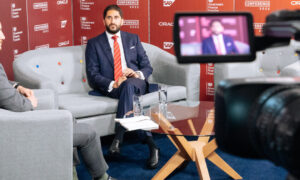As Head of Strategy at Live Group, I’ve developed communication plans for large organisations needing to deliver difficult news to wide audiences. I’ve seen how straight-talking communication can steady an organisation. Here’s my no-nonsense take on getting your message across when it really matters.
Bruce Rose, Head of Content at Live Group
I’ve spent years helping enterprises, public sector organisations, and event teams communicate under pressure. One thing I’ve learned: when times get tough, the fluff needs to go. In an economic climate filled with uncertainty – whether it’s a recession, budget cuts, or industry upheaval – people don’t have patience for vague corporate speak or sugar-coated half-truths. They want clarity and honesty.
Clarity Is Non-Negotiable in Crisis Communication
Clarity isn’t a “nice to have” – it’s the foundation of effective leadership communication. When the pressure’s on, clear and frequent updates prevent confusion, reduce anxiety, and build trust.
If a project is delayed, say so and explain why. If you don’t have all the answers yet, admit it and share what you do know. Being upfront about uncertainty is far more credible than filling space with waffle. In moments of doubt, clarity isn’t a luxury – it’s a leadership imperative.
Set the Right Tone: Clear, Calm and Human
No-nonsense messaging doesn’t mean being cold or robotic. Tone matters. Aim for a calm, candid, human voice.
Avoid doom and gloom, but don’t sugar-coat reality either. People can smell spin a mile off. If your message sounds like it was generated by a boardroom bingo machine, it won’t land. Ditch the jargon, speak plainly, and show empathy where it’s due.
Saying “this is going to be tough, and we’re working through it together” will always be better received than “we are recalibrating operational outputs to optimise strategic alignment.”
Tailor Your Messaging for Event Audiences and Stakeholders
Generic messages won’t cut it. Different groups have different concerns, especially in difficult times. Segment your audiences and tailor your comms to what matters to each of them.
Public sector? Use clear language, explain changes, and make the impact obvious. Enterprise clients? Skip the fluff and get to what affects their business. Event attendees? Be upfront with your messaging for event changes – whether it’s a revised agenda, speaker withdrawal, or venue issue. Tell them what’s happening and what it means for them.
If you don’t speak to people’s actual concerns, they’ll tune out. If you do, you’ll earn their attention – and their trust.
How to Inform Attendees of Event Updates – Quickly and Clearly
Uncertainty is no excuse for silence. Not sure how to inform attendees of event updates? Keep it short, timely, and specific. A quick email, SMS, or push notification in the event app beats a vague “stay tuned” every time.
When communicating schedule changes at events, don’t bury the lead. Tell people what’s changed, why, and what they need to do next – without overexplaining or deflecting. Clarity builds confidence.
Build Your Event Communication Plan Before You Need It
Every successful event needs a clear, proactive event communication plan – especially when things are moving fast. From briefing internal teams and speakers to updating attendees and partners, the way you communicate can make or break the delegate experience.
A well-prepared plan ensures consistency, reduces last-minute panic, and protects your reputation when changes arise. In short: don’t wing it.
The Future Belongs to the Straight-Talkers
This isn’t just a survival strategy. No-nonsense messaging is the future of communications.
Across the board – from enterprise boardrooms to government departments to global event stages – the expectation is shifting. People want to be spoken to like people. Not prospects. Not “stakeholders.” People.
Forget ten-paragraph emails. Replace them with two punchy sentences that say what’s happening and what it means. Cut the jargon. Kill the empty updates. Start having real conversations.

Final Word
Whether you’re managing an internal comms strategy, rolling out a new event communication plan, preparing stakeholders for a shift in direction, or delivering a keynote at a flagship event – your message needs to be clear, honest, and relevant. No exceptions.
Here’s my advice:
Cut the fluff. Speak plainly. Be consistent.
It might feel uncomfortable at first, but it’s powerful. People respect the truth. They remember clarity. And they follow leaders who sound like humans, not headlines.
In tough times, no-nonsense messaging isn’t just good practice. It’s the only practice that works. Let’s raise the standard.
Given the current economic uncertainty, it’s vital to work flexibility into vendor, venue, and speaker contracts.
Force majeure clauses, flexible cancellation terms, and clear contingency plans can help protect your event if circumstances change suddenly due to tariff adjustments, supply shortages, or broader economic shifts.
Download our latest report to explore the latest event solutions, learn how event production agencies are leveraging technology for seamless conference planning, and uncover strategies to enhance hybrid event management.






